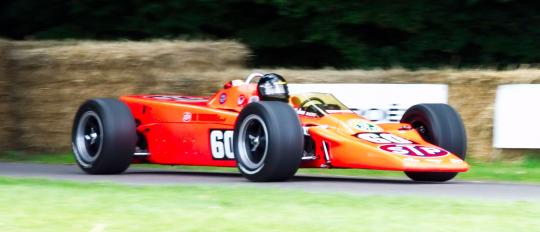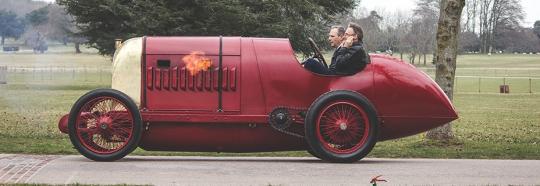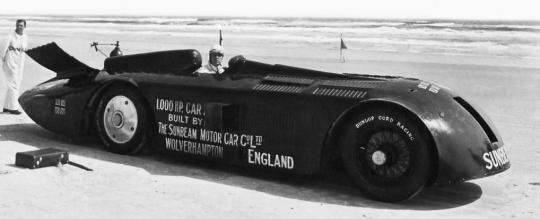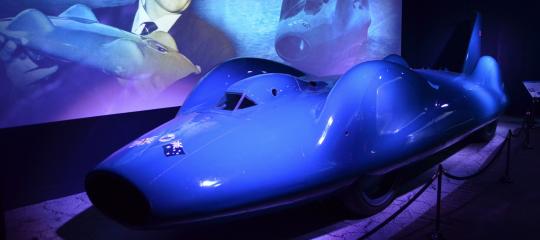Those of you that follow us with the utmost attention already know that we recently made a few cover stories regarding the largest engines found in production cars, as well as the smallest ones available in current production automobiles.
We talked about motorcycle engines fitted in vehicles from the factory, but also about innovative turbocharging and supercharging solutions.
As this year winds to a close, we thought it would be fun to look back at something that would be unimaginable today – a car with an aircraft-sourced engine. For the fun of it, we have also included helicopter engines as well, and the full list was shortened to five of the coolest ones we could find.
Evidently, from the first moment someone fits an airplane engine into a vehicle, the result will be cool, but we only selected the best of the best here, so bear with us to see why each of them was chosen.
Every once in a while, someone manages to fit an airplane engine in an automobile, but it is almost impossible to document all the builds that have been done. Instead, we focused on cars that were designed to have airplane engines in them, or have received the transplant for a particular purpose.Tucker 48

This was a production vehicle that featured a flat six engine, which was a modified variant of a Franklin 6 Series aircraft and helicopter engine. The modifications made by Tucker included adding water cooling, since the unit was placed at the rear of the vehicle that was named Torpedo during its development, but launched and sold as the 48 because its creator did not want to link the car to World War II.
Only 51 of these automobiles were ever produced, as the Tucker brand met its demise just two years later. However, this model was gravely ahead of its time from many points of view, and safety was the aspect that stood out: it had a padded dashboard, adaptive headlights, a laminated windshield, side-impact protection for occupants, and other innovations that are present in modern cars.
Interestingly, the Tucker 48 was not supposed to have an aircraft engine, but the Franklin 0-335 unit was chosen because Preston Tucker and his team had run out of time to develop their innovative power plant. Only 47 units have survived the test of time, and each of them is valued at several million dollars.Lotus 56

Oil additive manufacturer STP once commissioned Lotus to build a race car that would race in the Indy 500. The result was the Lotus Type 56, and it was designed to run and win the 1968 Indianapolis 500. It had a turbine engine that delivered power to all four wheels, and the idea behind the engine came from the head of STP, Andy Granatelli.
A Pratt&Whitney ST6 gasoline turbine engine was the base for this vehicle. This car is relevant because it ended up inspiring the design of all the open-wheel racing cars that followed, even though it did not win anything in Formula 1 or Indy 500. Except for its engine and drivetrain configuration, many racing cars launched after the Type 56 presented features first shown on this model.
While we do not conceive a link between and oil additive manufacturer and a turbine-engined racing car, the point of this creation was to have a fast vehicle on the track with the sponsor’s logo. The Lotus Type 56 did not achieve that objective because of various mechanical fault, which was ironically not linked to the engine.Fiat’s “Beast of Turin” S76 300HP

You surely know this creation, even if it is over a century old and has been kept under wraps for almost as long. At this point, one might wonder how is this vehicle that famous – easy answer: it was fully restored and shown at the 2015 Goodwood Festival of Speed. We cannot think of a better place to showcase a creation like this.
This model is worthy of its place on this list because it was the first car that was successfully fitted with an aircraft engine. The culprit is a four-cylinder engine that has a displacement of 28.5-liters, which developed around 300 HP, available at just 1.900 rpm.
The large engine was supposed to help it set speed records, and it was fitted to a steel ladder frame from a racing model. The engine itself was not used in an aircraft per se, but Fiat did build aircraft engines in the same period. Displacement limits introduced in the top tier of European competitions at the time made the vehicle obsolete, leading to the sale of existing examples to various individuals. The one shown at Goodwood in 2014 was restored using original parts.Sunbeam 1000 HP Mystery “The Slug.”

Just like Fiat’s Beast of Turin, this creation was made to break records. Unlike the Fiat, Sunbeam’s “Slug” managed to become the first car to drive at over 200 mph (320 km/h). The achievement itself is something that remains unattainable for most cars of today, which made it even more impressive back in the day.
This vehicle was driven in 1927 by Henry Segrave at Daytona Beach, where it reached 327 km/h (203.79 mph). Unlike other creations on this list, the Sunbeam features two engines, both sourced from aircraft. Each unit has a displacement of 22.4 liters, and they develop a combined output of approximately 900 HP.
The engines were locked with a dog clutch when a record attempt was pursued. One of the units was placed behind the driver, while the other was in front of the daring operator. The former was started using compressed air, while the latter was engaged with a friction clutch.Bluebird CN7

You might say that we have saved the best for last, and you are correct. The vehicle in question is the Bluebird-Proteus CN7, which was a one-off made for Donald Campbell, who wanted to drive it at 500 mph (800 km/h). Its engine was a Bristol-Siddeley Proteus turboshaft powerplant, which developed 3.320 kW (over 4.000 HP).
Unlike other turbine engined vehicles, the Proteus 705 was a free turbine design that was modified to include drive shafts at each end of the engine, which was driving fixed ratio gearboxes and powering the wheels.
After an accident and various events that led to adverse conditions for a land speed record,
Donald Campbell set a speed record for driving at 403.10 mph in a four-wheeled vehicle. He ran the Bluebird at 648 km/h in 1964, but declared that he was disappointed with the result.
Another car was planned to outdo the result, but it did not happen because Donald Campbell lost his life in a jet hydroplane crash that took place in 1967. His father, Sir Malcolm Campbell, is among the few land speed record holders of the era that died of natural causes.








